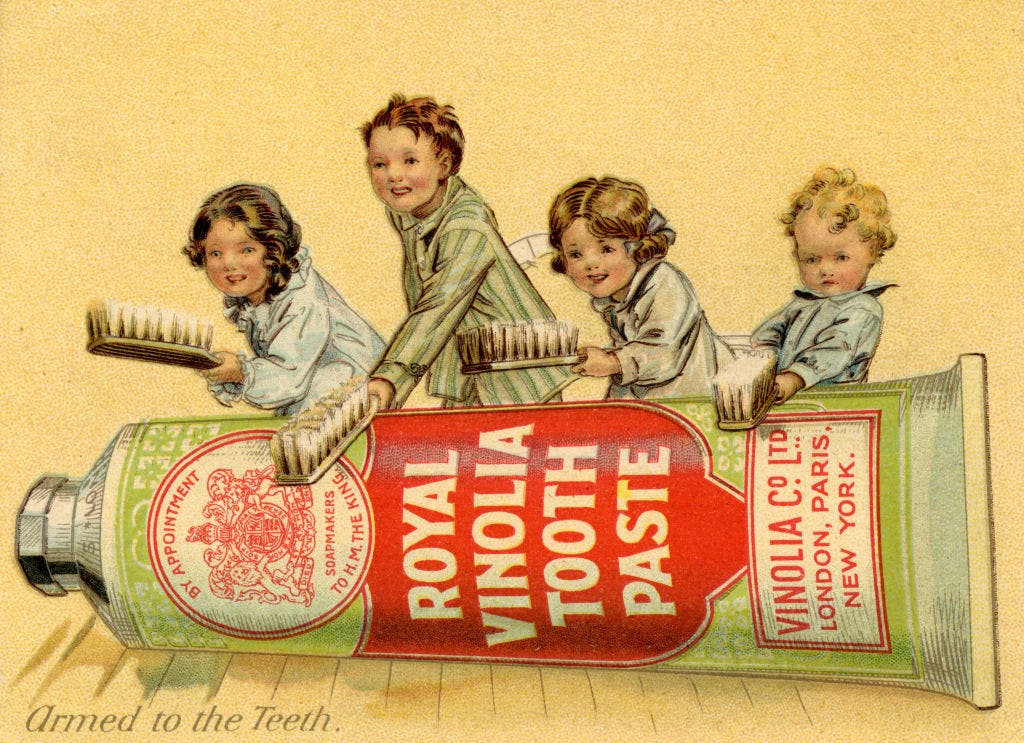Before the convenience of modern toothpaste in plastic tubes, our ancestors used various methods to maintain dental hygiene. Historical societies valued clean teeth, although not to the extent we do today. Contemporary amenities provide us with much greater opportunities for oral care. So how did people in the past attend to their dental needs with the resources available?
From as early as 500 BC, societies experimented with materials to create paste-like substances for teeth cleaning. Ancient Egyptians in the 4th century AD were the first documented people to devise a dental cream recipe. This recipe included a mixture of salt, pepper, mint, and dried iris flowers. While the abrasiveness of these ancient dental formulas sometimes caused bleeding of the gums, modern toothpaste often contains hydrated silica for a similar purpose.
Heinz Neuman, an Austrian dentist, experienced the Egyptian paste and noted its effectiveness despite causing bleeding initially. Other ancient recipes included peculiar ingredients such as burned ashes of an ox hoof or crushed eggshells. Greek and Roman concoctions also included ingredients like crushed bones and oyster shells with added charcoal for flavor.
During the medieval period from the 12th to the 14th century, non-abrasive methods such as herbal remedies and charms were used for dental treatments and hygiene. One recipe from this era called for honey, salt, and rye flour or rye meal. The “Trotula” texts from the 12th century provided remedies for common dental issues like whitening teeth and removing wine stains.
By the 1800s, dental hygiene became a higher priority, with toothpaste recipes resembling more closely what we use today. Recipes no longer caused bleeding gums, but they did include soap. In the 1900s, fluoride was discovered to be an effective teeth-cleaning substance and was added to most toothpastes. Today, toothpaste must contain fluoride to receive the ADA Seal of Acceptance.
Colgate introduced the first mass-manufactured toothpaste in 1873, marking a shift towards commercial toothpaste products. However, many households continued to use traditional toothpaste recipes. For example, the 1860 guidebook “The Practical Housewife” featured a toothpaste recipe with orris root, charcoal, Peruvian bark, prepared chalk, and essential oils like bergamot or lavender.
In conclusion, the history of toothpaste is a fascinating journey through the evolution of dental hygiene practices. From ancient Egyptian dental creams to medieval herbal remedies and modern-day toothpaste varieties, the quest for clean teeth has driven innovation and creativity. While we may take our abundance of toothpaste options for granted today, it’s essential to remember the ingenuity and resourcefulness of our ancestors in caring for their oral health.












